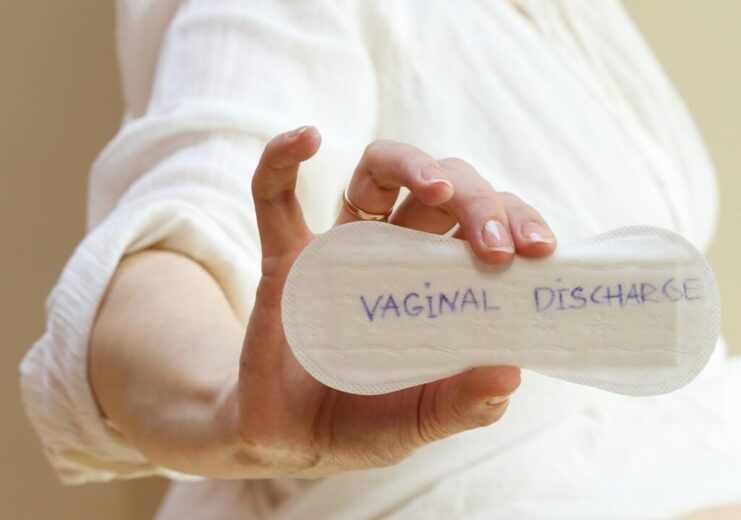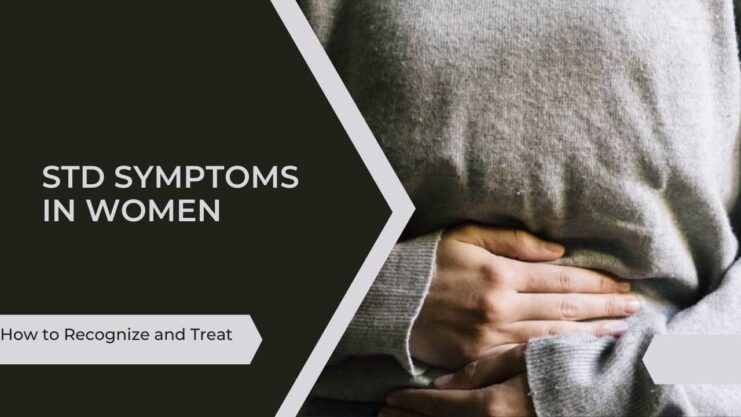Hey there, sister! I know talking about sexually transmitted diseases (STDs) can be a bit uncomfortable, but let’s face it, we’ve all been there, either personally or through a friend’s experience. As women, it’s crucial for us to be informed and proactive about our sexual health.
Trust me, I’ve seen and heard it all, and I’m here to help you navigate the world of STDs with a friendly and creative approach.
This article will focus on the possible STD symptoms women can get when their vagina is exposed to possible infection.
This includes allowing their partner to insert his penis into the vagina, allowing their partner to use his/her mouth on the vagina, allowing their partner to insert any objects into the vagina including fingers and sex toys.
So, let’s gather our courage, grab a cup of coffee, and dive into the world of STD symptoms in women together. No judgment here, just understanding and open conversation. Ready? Let’s go!
It is extremely important to remember that not all STDs cause symptoms in women.
One of the commonest and most important STD in women is Chlamydia. 80% of women infected with Chlamydia show no symptoms. Without treatment, it slowly damages the Fallopian tubes and can cause infertility. Sadly, many women only find out they have Chlamydia when they have problem getting pregnant. By then it could be too late. Women under the age of 24 are also more likely to get Chlamydia infection because their Cervix has not matured yet. Currently, all young women are encouraged to get regular (at least once per year) Chlamydia screening.
Another very important and common STD in women is HPV. Just like Chlamydia, most women who get infected with HPV do not show any symptoms. This can lead to Cervical Cancer. All sexually active women must get screened for HPV and are also very much encouraged to get a HPV vaccine.
Now let’s discuss the possible STD symptoms in women.
You can basically classify the symptoms into 5 groups:
1. Urinary symptoms – Burning pain passing urine, going to the toilet very often etc
2. Vaginal Discharge – Abnormal discharge from the vagina especially colored or foul smelling
3. Sexual Symptoms – Pain during sex, bleeding after sex
4. Skin Symptoms – Ulcers, Blisters, Growth, Itch etc
5. General Symptoms – Fever, Swollen lymph nodes, lower abdominal pain
1. Urinary Symptoms

This is one of the most STD symptoms in women. Women can get pain or a burning sensation passing urine. They can also feel like they need to go to the toilet all the time. The symptoms actually feel very much like a bladder infection or a urine tract infection.
Sometimes, women get an ulcer on the labia from Herpes. So when they pass urine, the urine flows pass this ulcer causing pain. This can also feel like ‘pain when passing urine’.
Who are the culprits?
- Chlamydia
- Gonorrhea
- NSU, Ureaplasma, Mycoplasma
- Herpes
When do these symptoms usually appear?
Remember that most women will not get any symptoms in the first place. For those who do get symptoms, they usually appear within 2 weeks of infection. Although it can be as early as 2 days and as late as 1 month from the day of infection.
2. Vaginal Discharge

This is easily the most common symptom women get from STDs. Sometimes it is hard to tell apart from a normal discharge. If the discharge smells bad or has an odd color like green or yellow, it is more likely to be an STD. A quick guide is as follows:
- Yellow and thick – Gonorrhea (STD)
- White and thick – Yeast (not STD)
- Green and smells like fish – Trichomonas (STD)
- Grey and thin – Gardnerella (not STD)
- Yellowish and thin – Chlamydia (STD)
Often, discharge caused by infections do not follow these ‘textbook’ descriptions. The lesson here is you can never be 100% sure what is causing the discharge unless you get a test.
Who are the culprits?
- Chlamydia
- Gonorrhea
- NSU, Ureaplasma, Mycoplasma
- Trichomonas
When do these symptoms usually appear?
The usual guide is 3 to 30 days. Gonorrhea usually appears much sooner. Usually within a week. Chlamydia usually appears at about 2 weeks.
3. Sexual Symptoms

– Pain during sex
During sexual intercourse, the penis usually gently hits the cervix. This should not be painful. But if the Cervix is inflamed, usually due to an STD, this can be rather painful. In fact, if the Cervix is very sensitive and tender, this could mean that the woman has PID (Pelvic Inflammatory Disease). This is very dangerous.
– Bleeding during or after sex
It is very common for the vagina to suffer mild abrasions and tears during intercourse and this can cause some bleeding. However, if there is an infection, the lining of the vagina will be very fragile and can break easily causing more bleeding. Also, if the Cervix is infected with HPV, it may be already turning into pre-cancer. When this happens, the Cervix will bleed much more easily especially when the penis is hitting it during intercourse.
Who are the culprits?
- Chlamydia
- Gonorrhea
- NSU, Ureaplasma, Mycoplasma
- HPV
When do these symptoms usually appear?
This is extremely variable. It can be as early as within a few days to months.
4. Skin Symptoms

– Ulcers
These are breaks or craters on the skin. They are usually white. If they are small, multiple and painful, they are likely to be caused by Herpes. If there is only 1 large painless ulcer, it is likely to be Syphilis. If it is 1 large painful ulcer especially if the lymph nodes in the groin crease are also enlarged and painful, it is like to be a Chancroid caused by the bacteria called Haemophilus Ducreyi. Sometimes, these ulcers can appear inside the vagina which makes it impossible for you to see. Only your doctor will be able to see it with an internal examination. If these ulcers are painless, like the ones due to Syphilis, you might never know you had it.
– Blisters
These are little fluid filled bubbles on the skin. If they are multiple and painful and burst to form ulcers, they are very likely to be caused by Herpes.
– Growths
Growths on the skin are usually indicate of an STD. These growth can occur anywhere including the pubic region, on the labia and even in the vagina. Sometimes they can be difficult to see. If the growths are skin colored and have an uneven surface (like a cauliflower), it is like to be a wart caused by HPV. If the growths look like little pearls stuck onto the skin, it is probably caused by Molluscum Contagiosum Virus.
– Itch
Itching can be on the skin or inside the vagina. Itching on the skin can be caused by lice or scabies. The itching caused by this is usually very severe and worse at night. Itching in the vagina can be extremely uncomfortable and can be caused by Trichomonas. However, the commonest cause of vaginal itching is still by far a yeast infection.
Who are the culprits?
- Herpes
- Syphilis
- Haemophilus Ducreyi
- Molluscum Contagiosum Virus
- Trichomonas
- HPV
When do the symptoms usually appear?
Syphilis 9 to 90 days. Herpes 1 week or months. HPV commonly 3 to 6 months but can be as early as a week.
5. General Symptoms

– Fever
This symptom is really too general to be useful. In fact, very few STDs aside from HIV actually cause a fever. So if you do have a fever, more likely than not, it has absolutely nothing to do with any STD.
– Swollen Lymph Nodes
When an area is infected, the lymph nodes will swell as part of the body’s natural reaction to help fight the infection. So if there is any infection in the vagina or pelvic region, the lymph nodes along the groin crease will likely swell and may even be a little tender. This can occur with almost any STD including Syphilis, Gonorrhea, Chlamydia, Chancroid etc. Basically, if you notice swollen and tender lumps in your groin crease, it would be best to see your doctor asap.
– Lower abdominal pain
STDs that infect the vagina can also infect the cervix. The infection can go even further up to infect the womb (Uterus) and the Fallopian tubes. Once past the Fallopian tubes, the infection is in the pelvis and can lead to Pelvic Inflammatory Disease. Any of these conditions can cause pain in the lower tummy, just above the pubic bone. This is usually caused by Chlamydia but can also be caused by Gonorrhea, NSU, Ureaplasma, Mycoplasma etc
Who are the culprits?
- Herpes
- Syphilis
- Gonorrhea
- Chlamydia
- NSU, Ureaplasma, Mycoplasma
When do the symptoms usually appear?
Syphilis 9 to 90 days. Gonorrhea and Chlamydia can cause symptoms in as early as 3 days from infection but can take 2 weeks or even a month to show. Sometimes, they do not show any symptoms at all.
So what to do now?
Get tested!
If you have any of the above symptoms, get tested asap. Even if you do not have any symptoms, get tested.
Many STDs do not show any symptoms and can damage your body permanently. Do not wait until it is too late.
Prevention Strategies: Safe Sex and Vaccinations
- Practicing safe sex is one of the most effective ways to prevent STDs. Consistently using condoms and dental dams during sexual activity can significantly reduce the risk of transmission. It’s essential to use a new condom or dental dam for each sexual encounter and to use them correctly. Additionally, consider using a water-based lubricant to minimize friction and reduce the likelihood of condom breakage.
- Limiting your number of sexual partners and maintaining open communication about sexual health with partners can also help in preventing STDs. Regularly discussing testing and sharing results can help create a safe sexual environment. Furthermore, getting vaccinated against certain STDs, like HPV (Human Papillomavirus), can provide protection against infections that can cause cervical cancer and genital warts. It’s crucial to stay up-to-date on your vaccinations and discuss any concerns with your healthcare provider.
- Other preventative measures include avoiding sharing personal items such as towels, razors, and sex toys, as they can harbor infectious agents. Regular handwashing and maintaining overall good hygiene can also contribute to minimizing the risk of contracting STDs. Ultimately, staying informed about safe sex practices and being proactive about your sexual health is key to prevention.
Getting Tested: What to Expect and How Often
- Regular STD testing is essential for maintaining good sexual health. The frequency of testing depends on individual risk factors, such as age, number of sexual partners, and sexual practices. For example, sexually active women under 25 should be tested for chlamydia and gonorrhea at least once a year, while older women with new or multiple partners should also be tested annually. HIV testing is recommended at least once in a lifetime for all sexually active individuals, with more frequent testing for those with higher risk factors.
- STD testing can be performed in various settings, such as your doctor’s office, a sexual health clinic, or even at home with a reliable testing kit. The process may involve providing a urine sample, a blood sample, or a swab from the affected area, depending on the STD being tested for. Some tests may provide results in minutes, while others may require a few days for laboratory analysis.
- It’s essential to be honest with your healthcare provider about your sexual history and risk factors, as this will help them determine which tests are most appropriate for you. Remember that regular testing is crucial for early detection and timely treatment, as many STDs can have long-term consequences if left untreated.
Treatment Options for Common STDs
- Treatment options for STDs vary depending on the type of infection. Bacterial infections, such as chlamydia, gonorrhea, and syphilis, are typically treated with antibiotics. It’s crucial to follow the prescribed treatment plan and take the full course of antibiotics, even if symptoms improve before the medication is finished, to ensure the infection is eradicated.
- Viral infections like herpes, HPV, and HIV cannot be cured, but antiviral medications can help manage symptoms, reduce the frequency of outbreaks, and decrease the risk of transmission to others. In some cases, individuals may need to take antiviral medications long-term to maintain control over the infection. It’s important to discuss treatment options and potential side effects with your healthcare provider to develop the best plan for managing your condition.
- In addition to medical treatments, maintaining a healthy lifestyle, including proper nutrition, regular exercise, and stress management, can help support your immune system and overall wellbeing. Engaging in self-care and seeking support from friends, family, or mental health professionals can also be beneficial in managing the emotional and psychological aspects of living with an STD.
The Psychological Impact of STDs
- Being diagnosed with an STD can lead to various emotional and psychologicalresponses, including feelings of shame, guilt, embarrassment, and fear. It’s common for individuals to experience anxiety and depression after an STD diagnosis, which can impact their self-esteem and overall mental wellbeing. It’s crucial to recognize that these feelings are normal and that many people face similar challenges after being diagnosed with an STD.
- Talking to Your Partner(s) about STDsSeeking professional help from a therapist or counselor can be beneficial in addressing and processing these emotions. Mental health professionals can provide guidance on coping strategies, self-care, and communication techniques to help manage the psychological impact of an STD diagnosis. Joining support groups, either in-person or online, can also provide a sense of community and a safe space to share experiences and feelings with others who are going through similar situations.
- Open and honest communication with your partner(s) about your diagnosis is essential in maintaining healthy relationships and ensuring that both parties understand the situation and can take appropriate precautions. Remember that it’s possible to have fulfilling and satisfying relationships, even with an STD diagnosis, by practicing safe sex and working together to manage the condition.
Talking to Your Partner(s) about STDs
- Discussing STDs with your partner(s) can be a challenging and sensitive conversation, but it’s essential for maintaining a healthy and honest relationship. Approach the topic with empathy, understanding, and a non-judgmental attitude. It’s important to share your own testing history and encourage your partner(s) to do the same, creating a sense of mutual trust and openness.
- Be prepared to answer questions and provide information about the specific STD(s) you may have, including transmission risks, prevention strategies, and treatment options. Encourage your partner(s) to ask questions and voice any concerns they might have. It’s essential to be honest and forthcoming about your diagnosis, as this will help to alleviate any misconceptions or fears that may arise.
- Establishing boundaries and discussing safe sex practices, such as using condoms or dental dams, can help prevent the spread of STDs and protect both partners. Regular testing and open communication about sexual health can foster a safe and supportive environment in which both partners can feel comfortable and informed about their sexual health.
Frequently Asked Questions
How can I reduce my risk of contracting an STD?
Practicing safe sex, using condoms and dental dams consistently, getting vaccinated, limiting the number of sexual partners, and regularly getting tested can all help reduce the risk of contracting an STD.
Can I get an STD from oral sex?
Yes, certain STDs can be transmitted through oral sex, including herpes, gonorrhea, syphilis, and chlamydia. Using barrier methods like condoms and dental dams can help reduce the risk of transmission during oral sex.
What are the long-term effects of untreated STDs in women?
Untreated STDs can lead to several long-term health complications, including pelvic inflammatory disease (PID), infertility, chronic pain, and an increased risk of ectopic pregnancy. In some cases, untreated STDs like HPV can also lead to cervical cancer. Regular testing and early treatment are essential for preventing these complications.












